Wood has natural elasticity and plasticity. When treated it becomes very flexible, can be shaped into various forms, and when conditions cease it retains its new shape. One such treatment is steaming, which we talked about in the article on Thonet chair. I thought I'd revisit it to show you that you don't need a factory to get steamed wood, and the items you can get are simply charming.
I was saying that to make it more flexible the wood needs to be steamed. To do this, its natural elasticity and the way it was cut must be taken into account. Elasticity is expressed by the modulus of elasticity, which is the force required to deform the wood (until it breaks) in relation to the surface. With the modulus of elasticity we can see the differences in elasticity between species. Wood is more flexible the lower the force required to deform it.
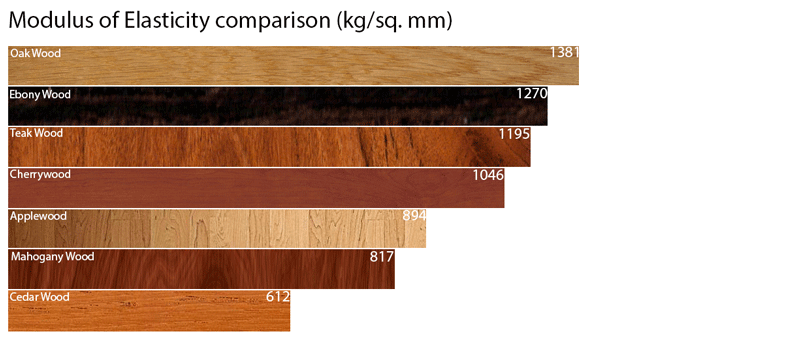
Elasticity also depends on the density of the wood - the denser the wood, the less flexible it is, but also on the direction of the grain. A piece of wood is more elastic along the grain than perpendicular to the grain.
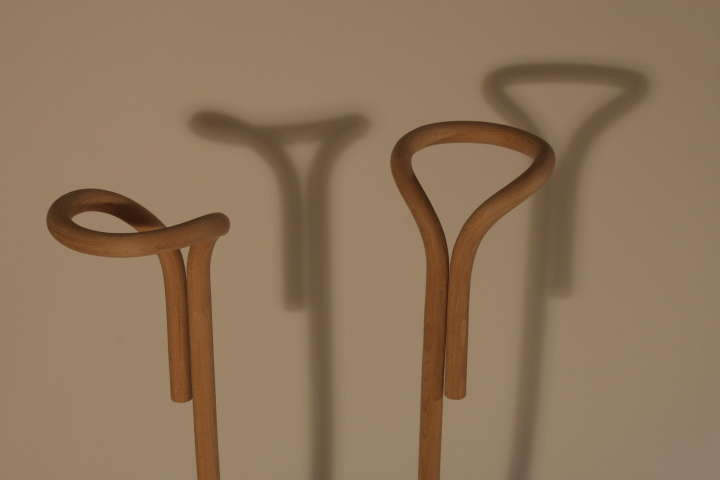
It should also be known that once the wood starts cooling by removing the steam source, the wood returns to its original elasticity. This means that it must be shaped into the desired shape as soon as it comes out of the steam and kept in that shape until it is completely cooled. It is necessary to put the wood into moulds very quickly or to bend it according to a template and keep it there until it cools.
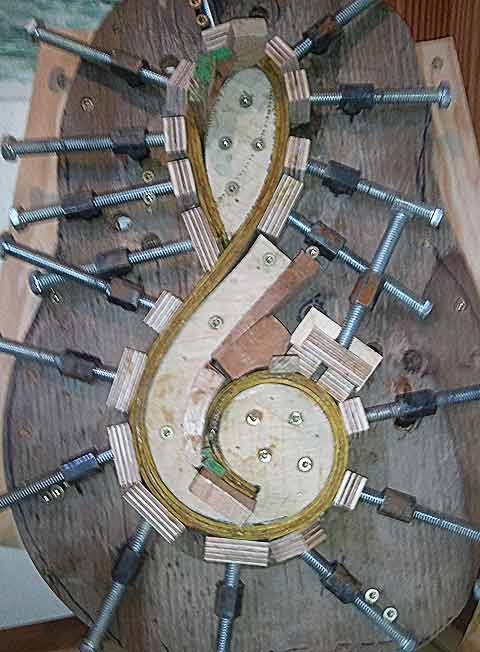
Knowing this we can start building our own wood steaming plant. You need water, a source to heat it to boiling, an enclosure for the wood and a way to get the steam into the enclosure. I think the easiest is to see the diagram below.
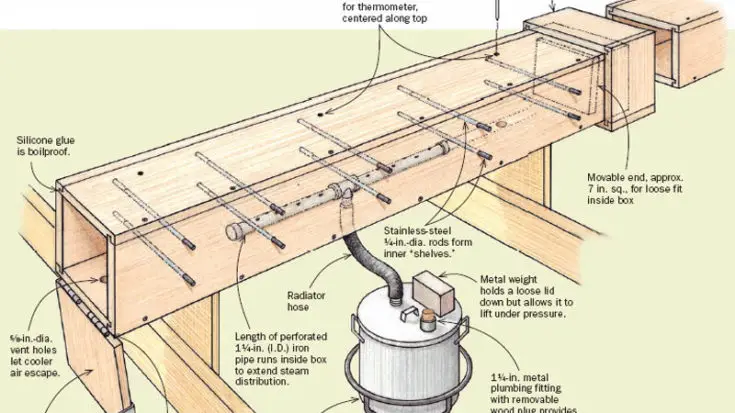
At first glance it seems complicated, but it's not. Don't think that everything has to be very airtight or that you have to have systems inside the box that release steam evenly. You can start with simpler installations and perfect them over time. Does the box below still seem complicated to you?
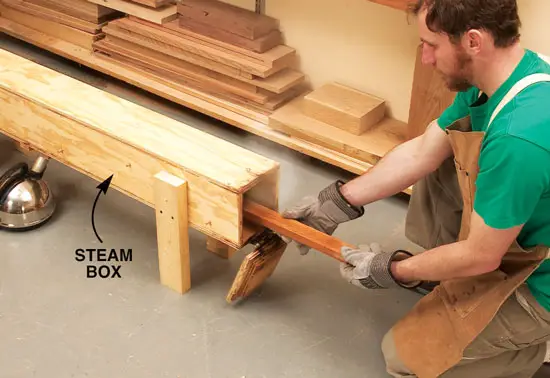
For the wood to become elastic you need to steam it for one hour for every 2.5 cm of thickness at a steam temperature of 100-105 degrees C. I know, it sounds like a lot, but don't take it literally, it can be done a little faster. Plus 2.5 cm thick is quite a lot. If you start with thinner pieces of lumber the time will reduce considerably.
For those who have been scared off by the fact that it's all so complicated, there are easier ways. In the video below you'll see how simply using a plastic bag instead of a wooden box he managed to bend a fairly long piece of wood.
Beautiful pieces of furniture can be made from steamed wood. There are famous carpenters like Mike Jarvi who do incredible things. The table below is made from a single piece of wood that has been steamed.
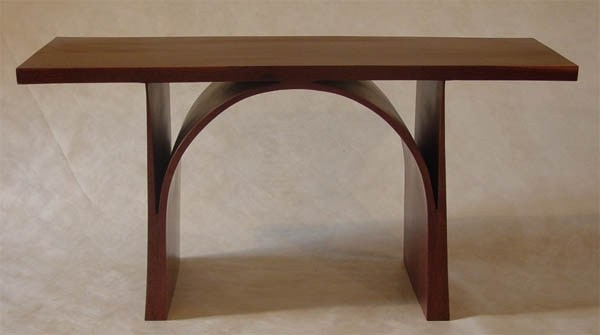
And he is not the only one. Famous designers produce pieces that can rightly be considered true works of art.
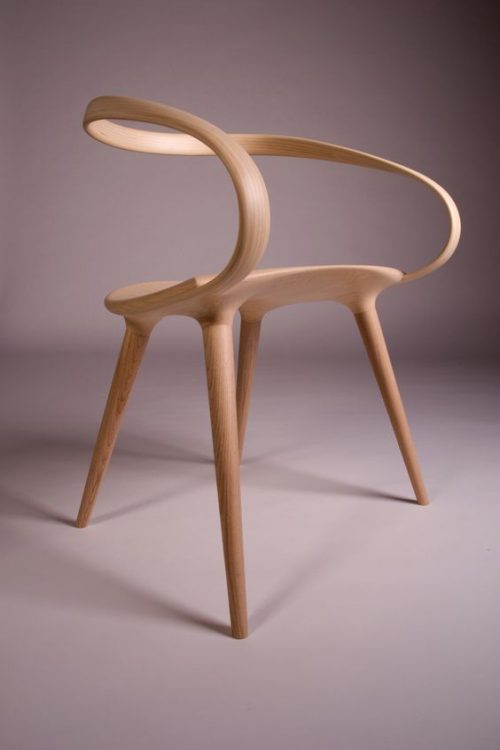
I don't know if I've convinced you, but I'm sure of one thing: I've made many of you dream. And I've also convinced you that it's not so difficult to make your own walking stick at home. Isn't it? 🙂






















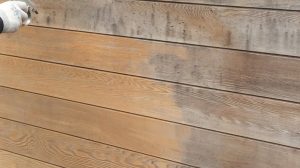
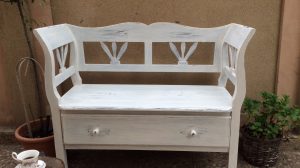
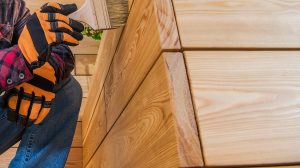
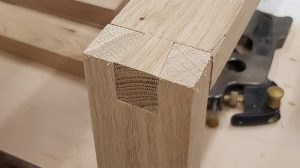

I've been trying to steam the tree, and it doesn't work. Apparently, the fiber in the fir breaks before it bends, on any attempt at wider bending. Do you have any tips?
Good evening,
Unfortunately, it works harder on less homogeneous, looser wood. In the literature the term used for such essences is spongiase. Much better behaved is beech, for example. Before '89, the Comanesti factory used to make curved chairs only from beech. It had the lowest breakage rate. Try beech.
I recently read that you can get elastic wood if you steam such spongy essences and then press them. I'm still not very educated on the process, I need to find other sources. When I find out more I will let you know.
All the best!
Thank you!
It works with almost any essence -APPROPER- provided that the form (the one in which we put the material to be pressed) is made of metal (better thick cast iron) and that it is very well heated ...close to the steam temperature....
It works with almost any essence -APPROPER- provided that the form (the one in which we put the material to be pressed) is made of metal (better thick cast iron) and that it is very well heated ...close to the steam temperature....Stimata D-na Radu...congratulations for everything you do ...multe mi-au folosit ...le-am salvat ca atare...si pentru mai tarziu...CU PERMISUNEA DOMNIEI TALE,DESIGUR,AS DORI DACA SE POATE O ADRESALA PERSONALA DE E-MAILL...MULTUMESC ...O zi minunata ...si succes ...multa sanatate,,,din Iasi de la ...mos Costicaadresa mea este :
constantin_cascaescu@yahoo.com
Hello.
Thank you. Email address is: mihaela.radu@cesbrands.ro
In the case of steam treatment, I imagine the moisture content of the wood will increase. In this case, after fitting, will there be no warping or cracking due to loose reworking of the curved benchmark?
Hello,
No such problems occur because the moisture is practically forced from outside and tends to leave as quickly as possible. It is not the water in the internal structure of the wood that, when it comes out, creates tensions that lead to cracks. Steamed wood starts to lose water and therefore elasticity as soon as it is removed from the steamer. That is why it is very important that it is put into the press immediately (immediately means seconds). If it takes longer to put it in the press (a more complicated press) the recommendation is to bend it by hand and hold it there until it is immobilized in the press.
Thanks for this material.
I'm really glad you put up a clip of Louis Sauzedde. Although the man is not a carpenter (rather a carpenter, although due to his vast experience and technical sense he comes very close), he has a tremendous charisma and I found myself spending many hours watching his videos but at the same time learning a lot from him.